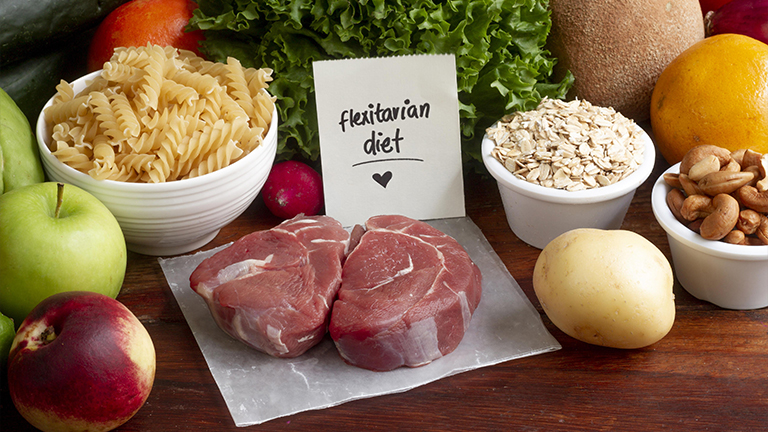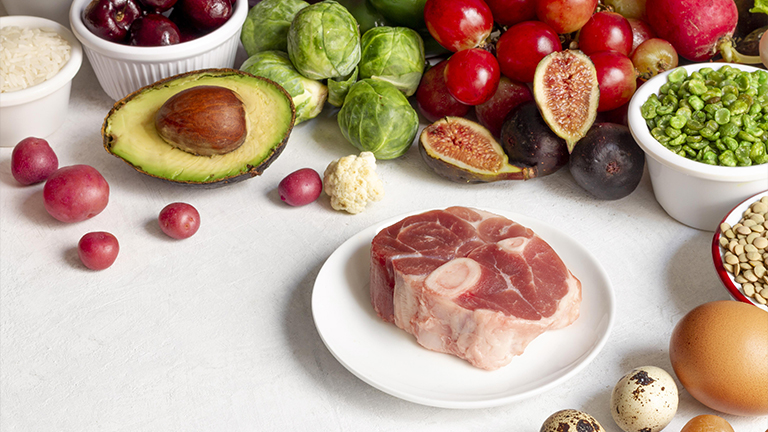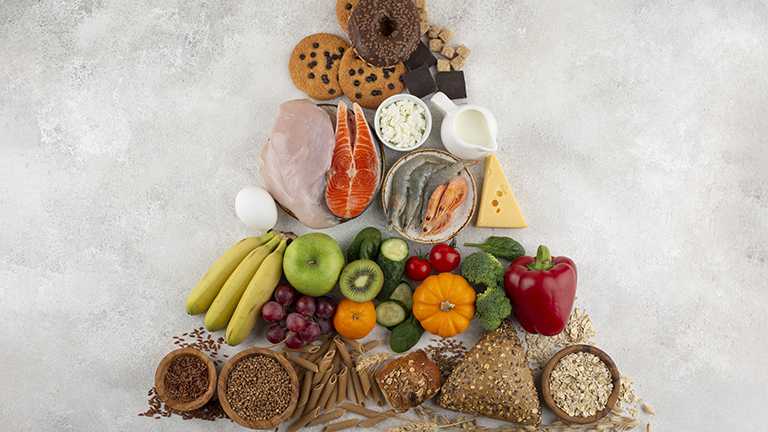When it comes to effective weight loss strategies, a high-protein diet for weight loss has consistently ranked among the most recommended. Whether you want to shed fat, build lean muscle, or simply improve satiety, protein plays a critical role. Unlike fad diets, protein-focused eating has strong scientific backing and works across different lifestyles—whether you follow a high-protein low-carb diet, a vegetarian high-protein diet, or include lean meats and dairy.
In this complete guide, we’ll cover the best high-protein foods for weight loss, sample meal plans, daily protein requirements, benefits, potential risks, and how this diet compares to others like keto.
What is a High-Protein Diet for Weight Loss?
A high-protein diet is an eating pattern where protein intake is increased above standard recommendations, usually making up 25–35% of total daily calories. Protein is prioritized over fats and carbohydrates, ensuring the body has enough amino acids to support muscle building, fat burning, and metabolism regulation.
For weight loss, the diet emphasizes lean meats, eggs, fish, dairy, legumes, nuts, and protein shakes. Unlike extreme diets, a high-protein approach can be flexible—adaptable to omnivores, vegetarians, and vegans alike.
How Does a High-Protein Diet Help with Weight Loss?
Protein is more than just a nutrient—it’s a metabolic powerhouse. Here’s why it works:
Protein and Metabolism
Eating protein boosts the thermic effect of food (TEF), meaning your body burns more calories digesting protein than carbs or fats. Studies show protein increases metabolism by 15–30%, compared to just 5–10% for carbs and 0–3% for fats.
Protein and Appetite Control
Protein promotes the release of satiety hormones (GLP-1, PYY, CCK) while lowering hunger hormone (ghrelin). This reduces cravings, helping you stick to your calorie deficit without constant hunger.
Best High-Protein Foods for Weight Loss
The cornerstone of a successful protein diet meal plan is choosing the right foods.
Animal-Based Protein Sources
- Chicken breast, turkey, and lean beef – rich in protein and low in fat.
- Fish (salmon, tuna, cod, mackerel) – high in omega-3s and muscle-building protein.
- Eggs and egg whites – budget-friendly, versatile protein source.
- Low-fat Greek yogurt, cottage cheese, and skim milk – excellent for quick protein intake.
Plant-Based Protein Sources
- Lentils, chickpeas, and black beans – fiber-rich and filling.
- Quinoa, edamame, and tofu – complete plant proteins.
- Nuts and seeds (almonds, chia, hemp seeds) – healthy fats plus protein.
- Plant-based protein powders – convenient for vegetarians and vegans.
Sample High-Protein Diet Meal Plan
Here’s a protein-rich daily meal plan to kickstart your weight loss journey:
Breakfast Ideas
- Greek yogurt with chia seeds and berries.
- Scrambled eggs with spinach and whole-grain toast.
- Protein shake with banana, whey protein, and almond milk.
Lunch and Dinner Options
- Grilled chicken breast with quinoa and steamed broccoli.
- Salmon with roasted sweet potato and asparagus.
- Tofu stir-fry with mixed vegetables and brown rice.
Snacks and Shakes
- Cottage cheese with sliced cucumber.
- Hard-boiled eggs or turkey slices.
- Almond butter on celery sticks.
- A post-workout protein shake for weight loss.
How Much Protein Should You Eat Daily?
The ideal intake depends on body weight, activity level, and goals.
- General recommendation: 0.8 g per kg of body weight (for maintenance).
- For weight loss and muscle preservation: 1.2–2.2 g per kg of body weight.
- Example: A 70 kg (154 lbs) person may need 90–150 g of protein daily.
Tracking macros helps ensure you’re meeting these goals without over-consuming calories.
Benefits of a High-Protein Diet
A protein-focused diet offers multiple health and weight loss benefits:
Fat Loss and Muscle Preservation
While cutting calories, protein helps preserve lean muscle mass—ensuring most of the weight lost is fat, not muscle.
Improved Metabolism
Higher protein intake increases daily calorie burn and helps maintain metabolic rate during dieting.
Better Satiety
Protein-rich meals reduce cravings and late-night snacking, making it easier to stick to your diet long-term.
Possible Risks and Side Effects
While beneficial, a high-protein diet may have potential drawbacks if not balanced:
- Kidney strain in individuals with pre-existing kidney issues.
- Digestive issues (constipation, bloating) if fiber intake is low.
- Over-reliance on processed high-protein snacks instead of whole foods.
To reduce risks, balance protein with fiber, healthy fats, and micronutrients.
High-Protein Diet vs Other Diets (Keto, Low-Carb, etc.)
- High-Protein vs Keto: Keto emphasizes fat as the primary macronutrient, while high-protein focuses on protein. Both can aid weight loss, but keto may be harder to sustain long-term.
- High-Protein vs Low-Carb: A high-protein low-carb diet is popular for rapid fat loss, but moderate carbs may support better performance and sustainability.
- High-Protein vs Low-Fat: Low-fat diets often leave people hungry, while protein-based diets enhance satiety and fat-burning.
Tips for Following a High-Protein Diet Successfully
- Prioritize whole foods over supplements.
- Include protein in every meal and snack.
- Combine protein with fiber and healthy fats for balance.
- Stay hydrated to support digestion and metabolism.
- Rotate between animal and plant-based proteins for variety.
Final Thoughts on High-Protein Diet for Weight Loss
A high-protein diet for weight loss is one of the most effective, science-backed ways to reduce fat while maintaining lean muscle. By including the best high-protein foods, following a smart meal plan, and meeting your daily protein needs, you can boost metabolism, control appetite, and achieve long-term results.
Whether you’re a man or woman, vegetarian or omnivore, this approach can be tailored to your lifestyle. With consistency and balance, protein can be the key to reaching your weight loss goals.



